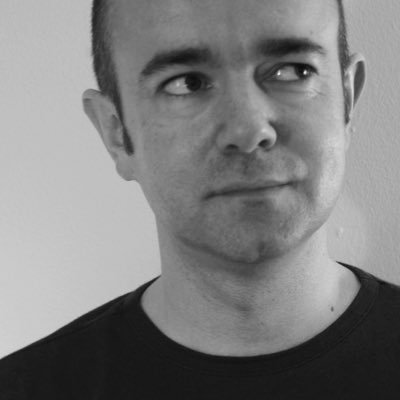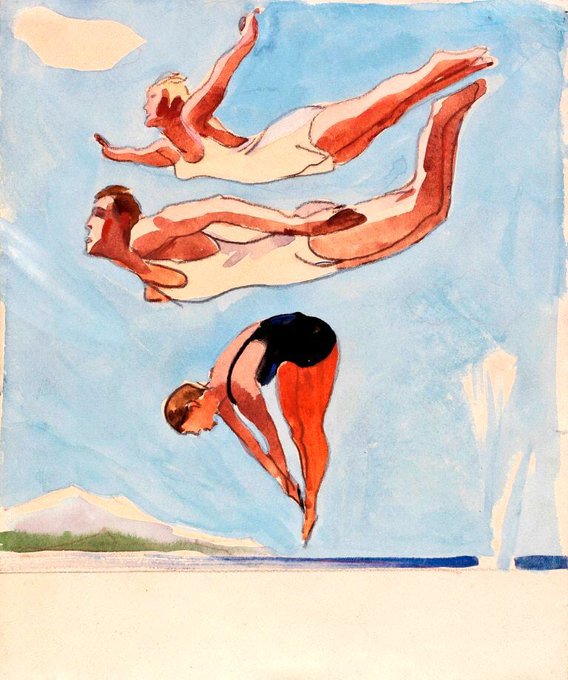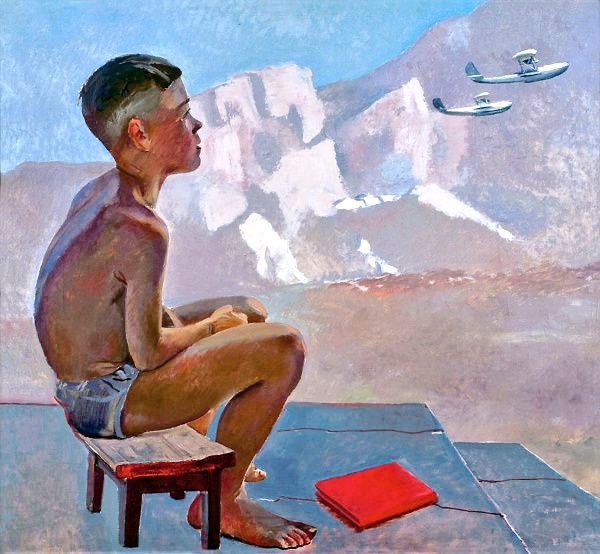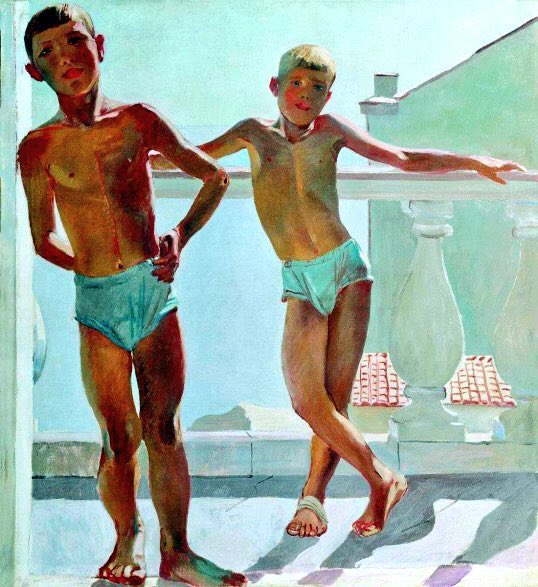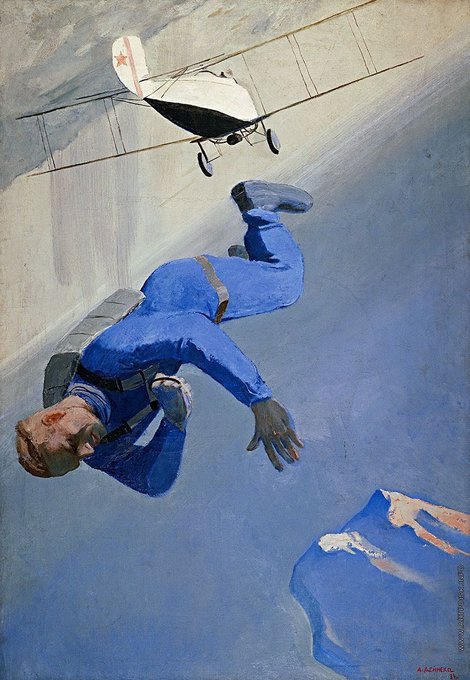Deyneka’s art ranged over a wide area. There were studies of the nude, heroic workers & the shattered remains of Berlin. The latter are notable in their lack of triumphalism & in documenting the fall of the Nazi empire
Still Life with Azaleas & Apples (1937), Divers (1838, design for subway station), Runner (1936) & Nikitka- the First Russian Pilot (1940) show the diversity of Deyneka’s subjects & his facility with creating iconic images.
He was a founder of several major Soviet art movements including Oktyabr. He was ranked by the USSR as ‘1a World Famous Artist’. Portrait (1935) & Nude studies however indicate that his first love was always the naked body. His male nudes, given the repression, are surprising
1934 saw Deyneka visit Italy where he spent three weeks & created atmospheric images of Rome. Classical ruins & statues figure large, reflecting his academic training. He revelled in the contrasting light & shade of the Mediterranean climate
A Pioneer, Kursk (1934), Crimean Pioneers (1934) & a Parachutist Above the Sea (1934). Deyneka approached his compositions with great originality & verb. He had an authentic empathy with children, painting them without sentimentality. The parachutist is a unique composition
Girls (1933), Red Navy Swimmers (1933), Children (1933) & Behind the Curtain (1933). There’s been argument over Deyneka’s sexuality. It’s clear from his work that he was interested in showing both the male & female nude with sensuality & eroticism
Who will Defeat whom? (1932), In the Air (1932) & the Night Landscape with Horses & Dry Grasses (1933). The early 30s were about depiction of a new strong Russia as well as views of the idea of the Russian countryside that was to be protected
Girl at the Window, Winter (1931), Mother (1932), Soccer Game (1932) & Gymnasts (1932) are fine examples of his experimentation with dark backgrounds to highlight his subjects. This lighting approach allowed him to focus on silhouette & a more exciting image
Running (1931), at the Press (1931), Dancers (1929) & Self-portrait (c1920-30) indicate his lifetime concern with speed, power, youth & new ideas.
His early masterpiece was Footballers (1924) where dynamic figures recede into & extend out of the plane of the canvas through colour & where the idea is to develop the depiction most where the players focus is aligned. Portraits (c1920s) show his modern approach
